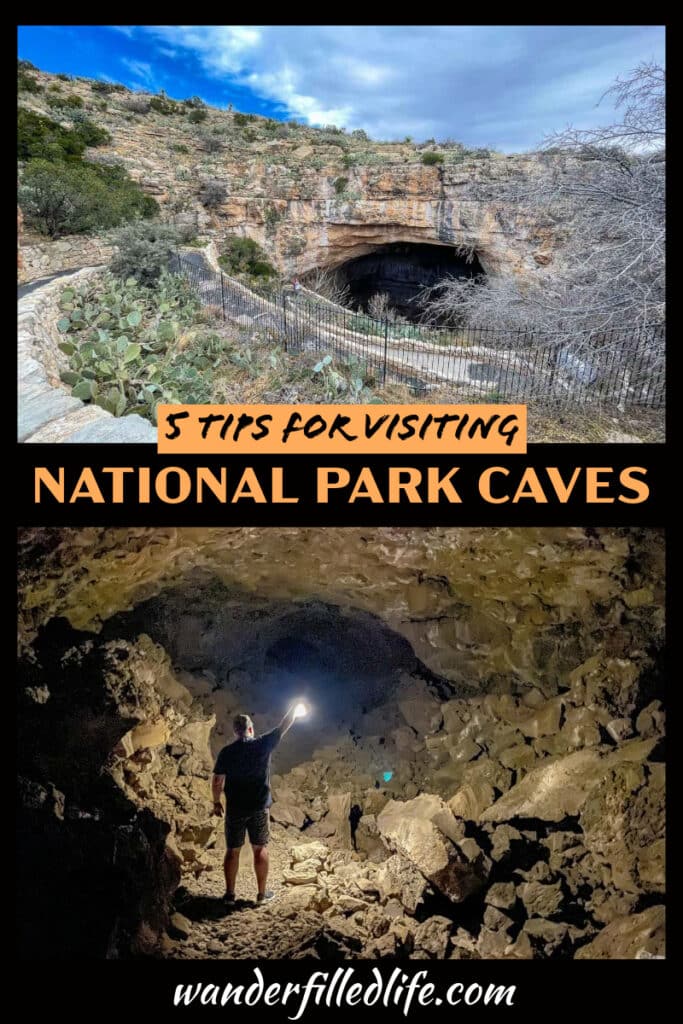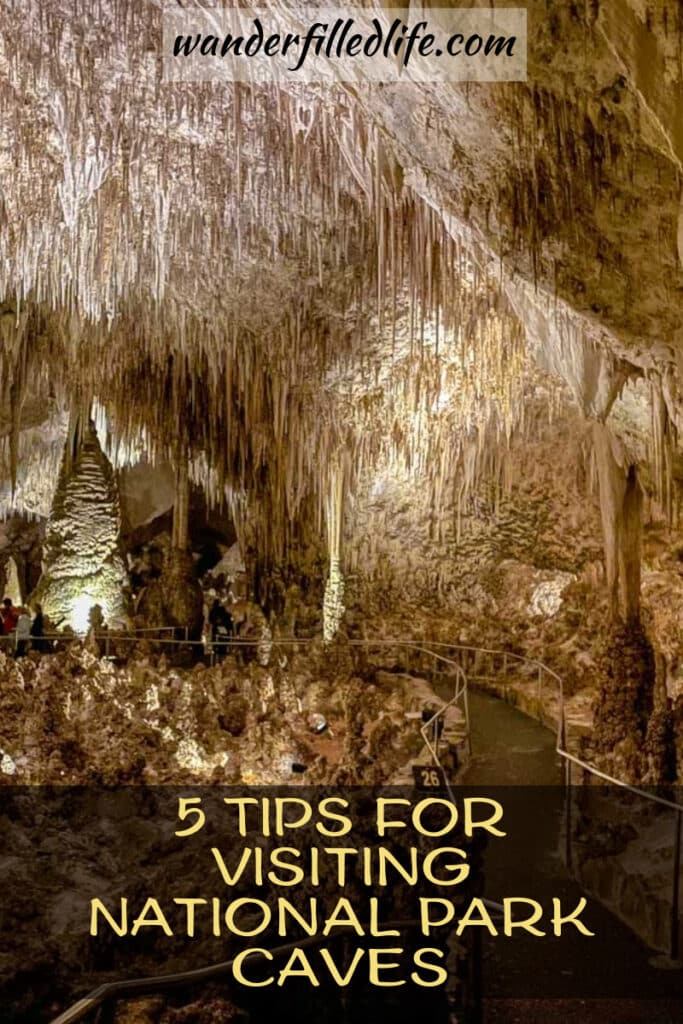Last Updated on February 20, 2024 by Grant
Visiting a National Park Service cave is an amazing experience but it does take some planning to do safely, prevent the spread of disease and make sure you can get in and see the sights!
The National Park Service protects hundreds of miles of underground networks across the more than 4,700 caves it manages. These different caves include Karst sinkholes and caves, solution caves, lava tubes, sea/littoral caves, talus caves and ice caves.
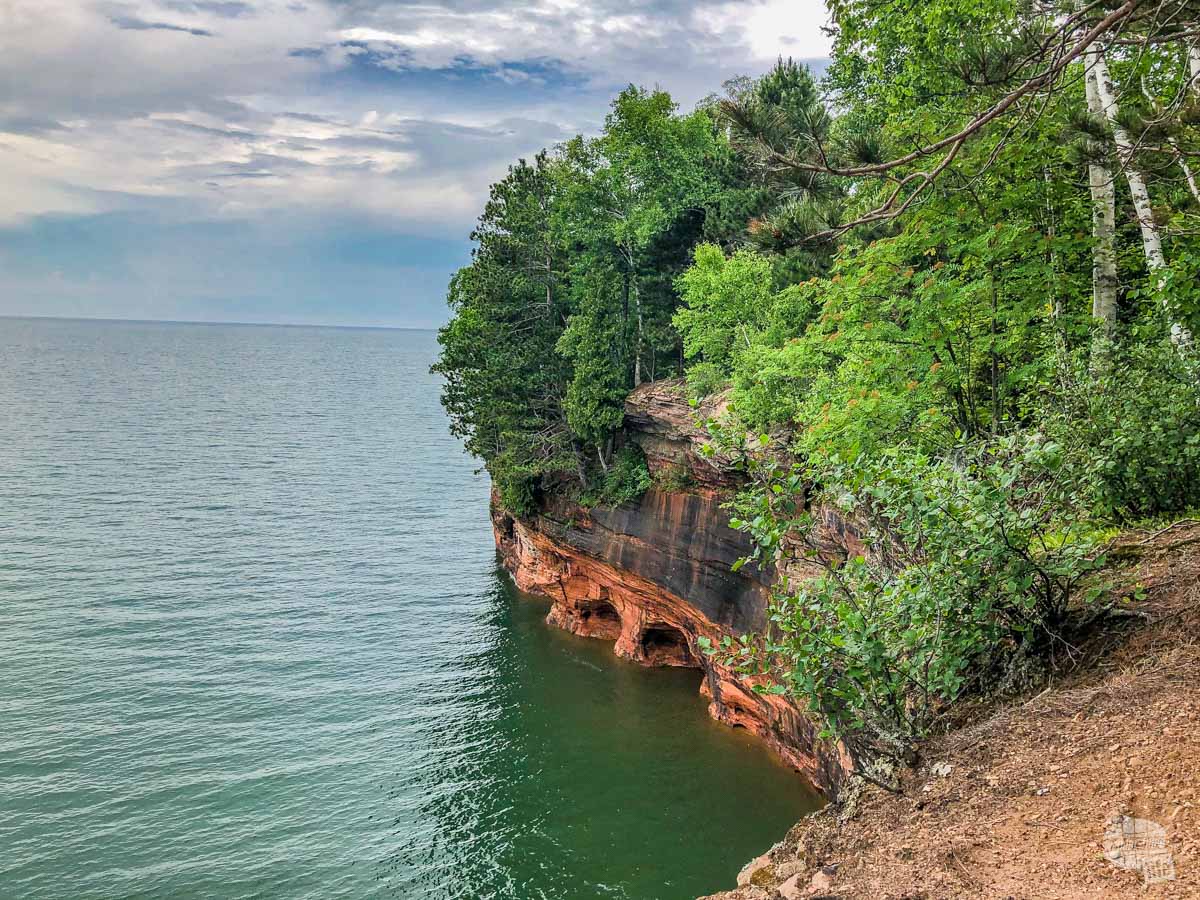
Some of the National Park Service caves, like Carlsbad Caverns National Park and Timpanogos Cave National Monument, are dedicated to visiting the underground spaces. Others, like Great Basin National Park and Lava Beds National Monument, include the ability to visit a cave but that’s not the park’s sole purpose. Other sites have caves but visiting the those requires either technical expertise or special permitting and are generally not open to the public.
Still, every cave we have visited has offered a wonderland of views and a completely different perspective on the formations of the world.
(Disclaimer: When we link to places where you can buy our stuff or places we stayed, we are using special codes that earn us commissions on the sales at no additional cost to you. Please see our Review Policy for more information.)
A Brief List of the Most Popular National Park Service Sites with Caves
- Mammoth Caves National Park
- Carlsbad Caverns National Park
- Wind Cave National Park
- Pinnacles National Park
- Sequoia National Park
- Great Basin National Park
- Channel Islands National Park
- Hawai’i Volcanoes National Park
- Oregon Caves National Monument
- Timpanogos Cave National Monument
- Jewel Cave National Monument
- Lava Beds National Monument
- Apostle Islands National Lakeshore
- Coronado National Memorial
- Craters of the Moon National Monument
- Russell Cave National Monument
- Sunset Crater National Monument
- Cumberland Gap National Historical Park
- Buffalo National River
Tip #1: Plan Ahead
Many of the National Park Service caves that allow public visitation require visitors to acquire tour tickets in advance. Oftentimes, that means getting on recreation.gov and reserving your tickets well in advance.
Some parks offer tickets in person for tours. That said, in-person ticket sales can have significant lines and limited availability, depending on the park and time of year. Wind Cave National Park, for example, does offer some in-person sales but its website also says tours often sell out at least an hour before the tour.
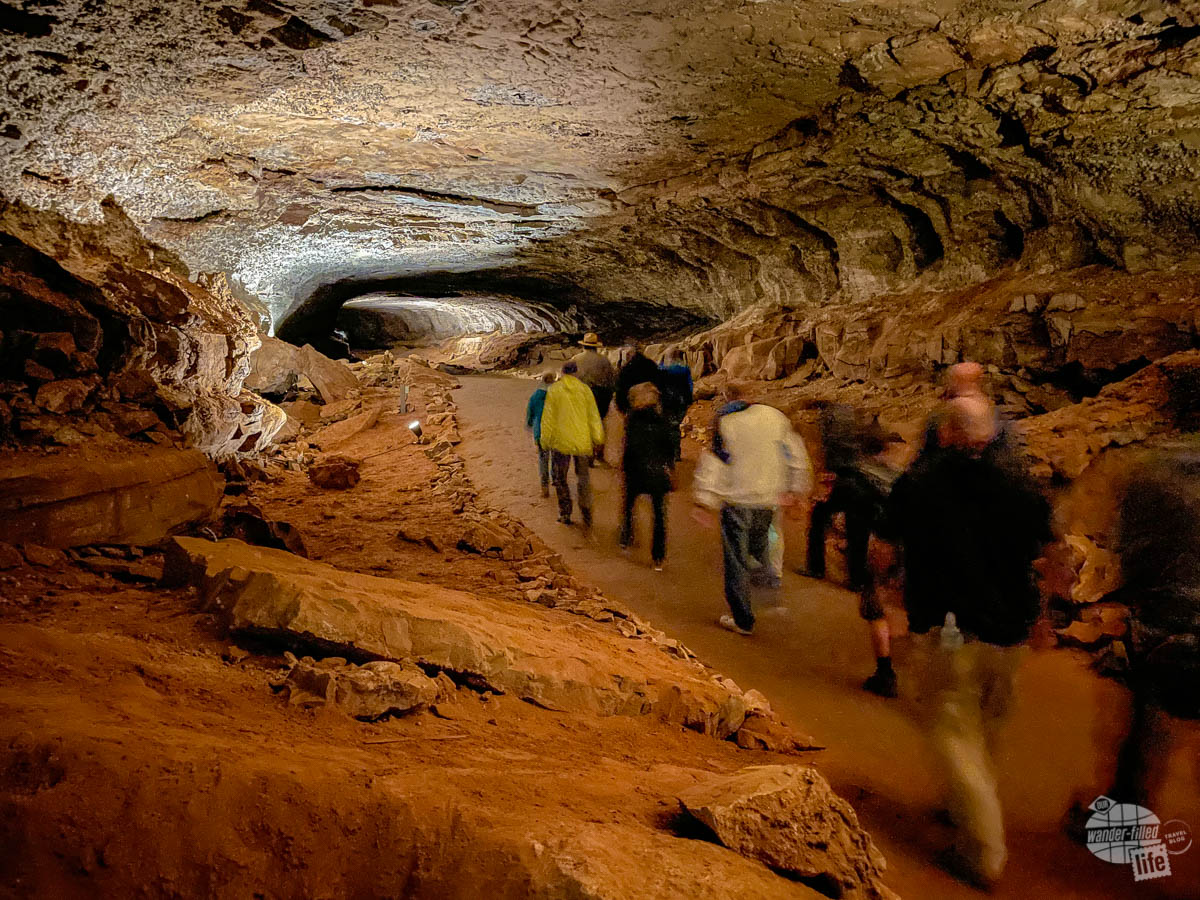
Pro tip: Take a screenshot of your tickets for the tour before you arrive at the park. Many of these parks have limited to no cell phone service and if you do not have the tickets downloaded, you will not be able to load them on your phones when you arrive.
The difficulty, especially post-COVID restrictions, is that each park decides how far in advance tickets will be offered, how many (if any) tickets will be available for sale the day of and how tickets will be sold. Additionally, this process sometimes changes.
For example, Oregon Caves National Monument did not offer online ticket sales when we visited in 2021. To secure a ticket, we had to show up at the visitor center before it opened and wait in line to purchase a ticket. To be fair, that was Fourth of July Weekend, so it was the highest visitation for the park. Now, the park offers online ticket sales.
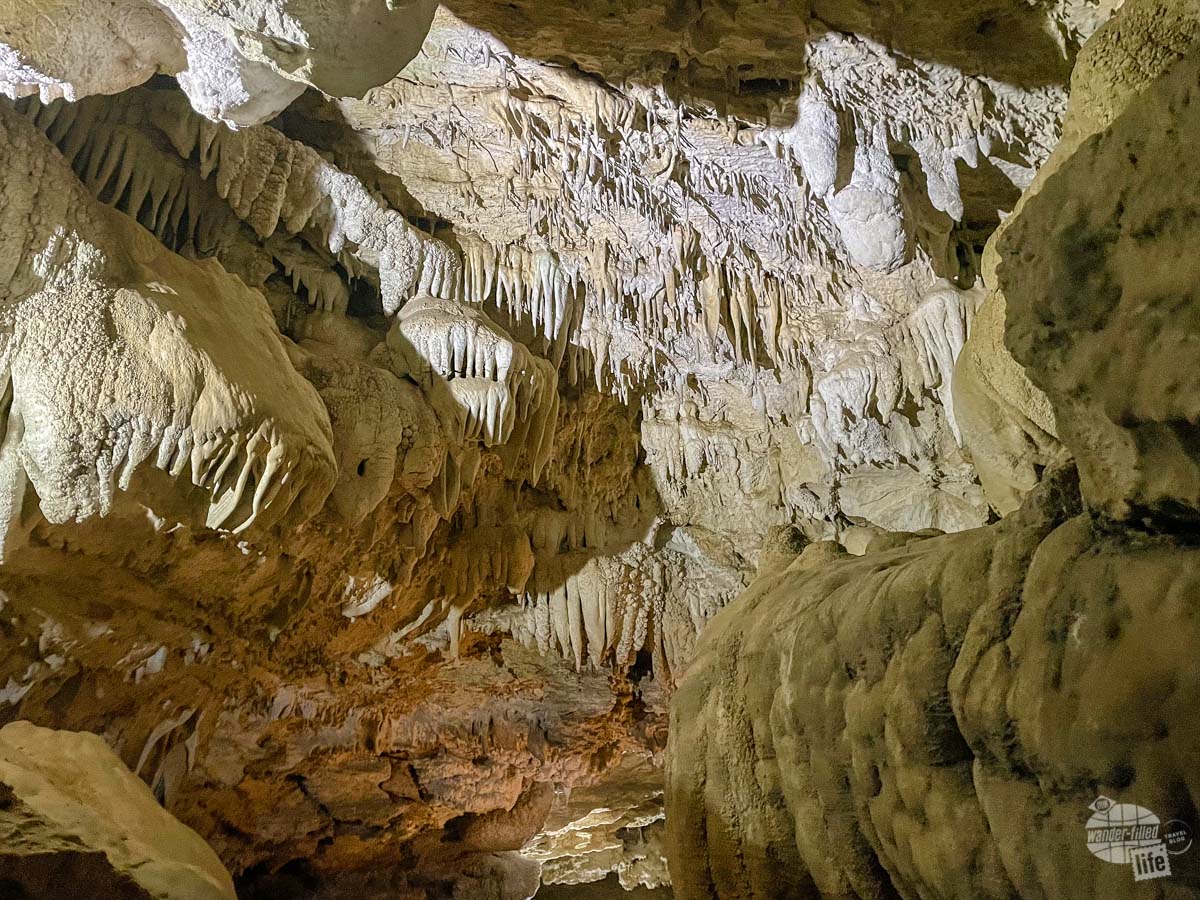
Some caves do not require tickets to visit and allow visitors to explore on their own, like Lava Beds National Monument and Coronado National Memorial.
The bottom line is that you should always check the official NPS website for any park you want to visit and check the information for tours in advance of your trip. Also, don’t assume that the process will stay the same. If you do your research in 2023, things could change by 2025.
Tip #2: Plan What You Pack in Advance
Every cave you visit will have its own requirements for visiting the cave. As a general rule of thumb, you should plan on bringing the following to any cave: sturdy, closed-toe shoes and warm clothing.
Even the most well-developed of the caves have rough or slippery sections. Having a solid pair of shoes is a good idea. You don’t have to wear hiking boots… tennis shoes will do but having that extra bit of protection and traction on your feet will make a difference.
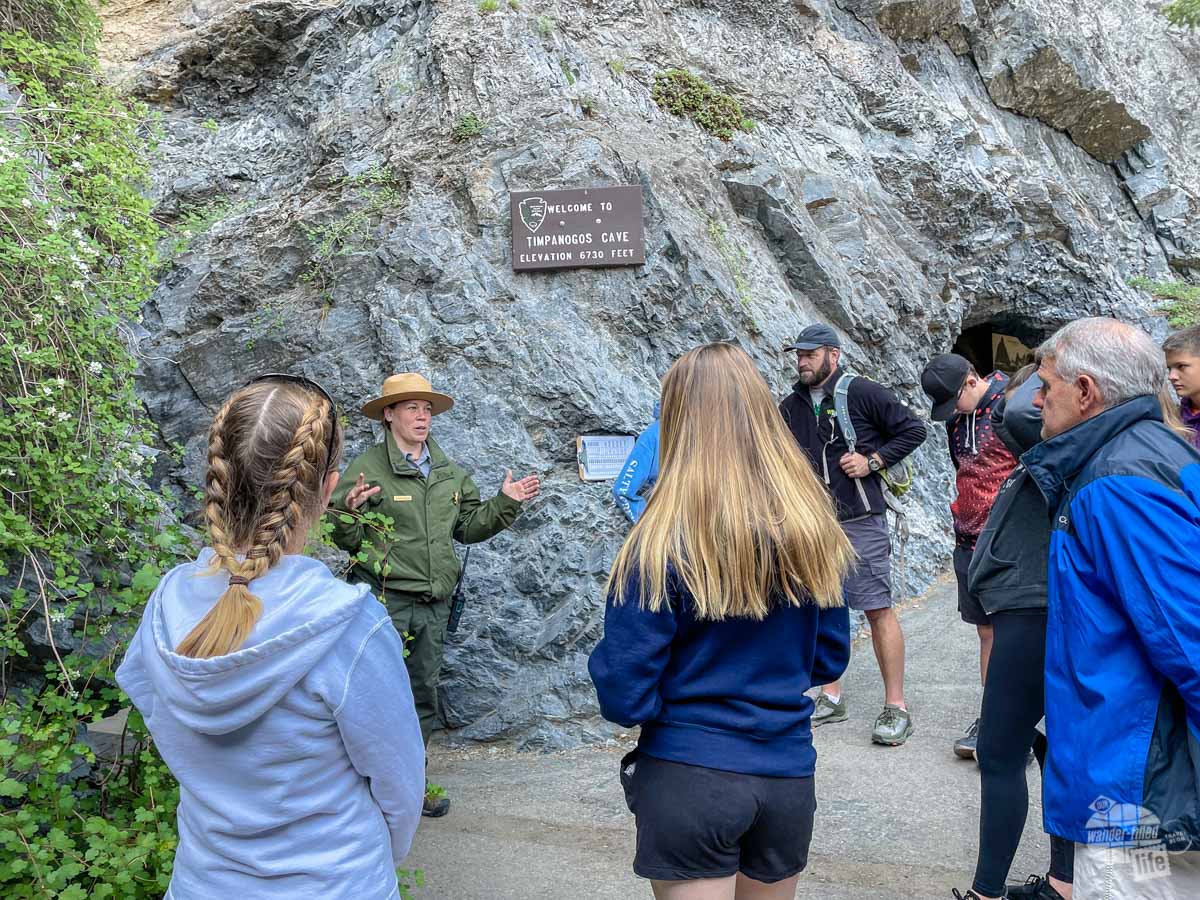
Next, bring warmer clothes than you would expect, especially in the summer. Indeed, most of the caves are between 45 and 55 degrees year-round. While that will feel nice, briefly, on a hot day, most tours are about an hour long. By the end of the tour, your teeth will be chattering if you don’t have a few extra layers.
If you are exploring a cave on your own, make sure you bring at least two light sources (and your phone does not count!) as well as spare batteries. We will always suggest headlamps as opposed to flashlights just because we like to have our hands free while exploring.
Pro tip: Before you walk into any cave or mine, take a picture of what you are wearing/carrying.
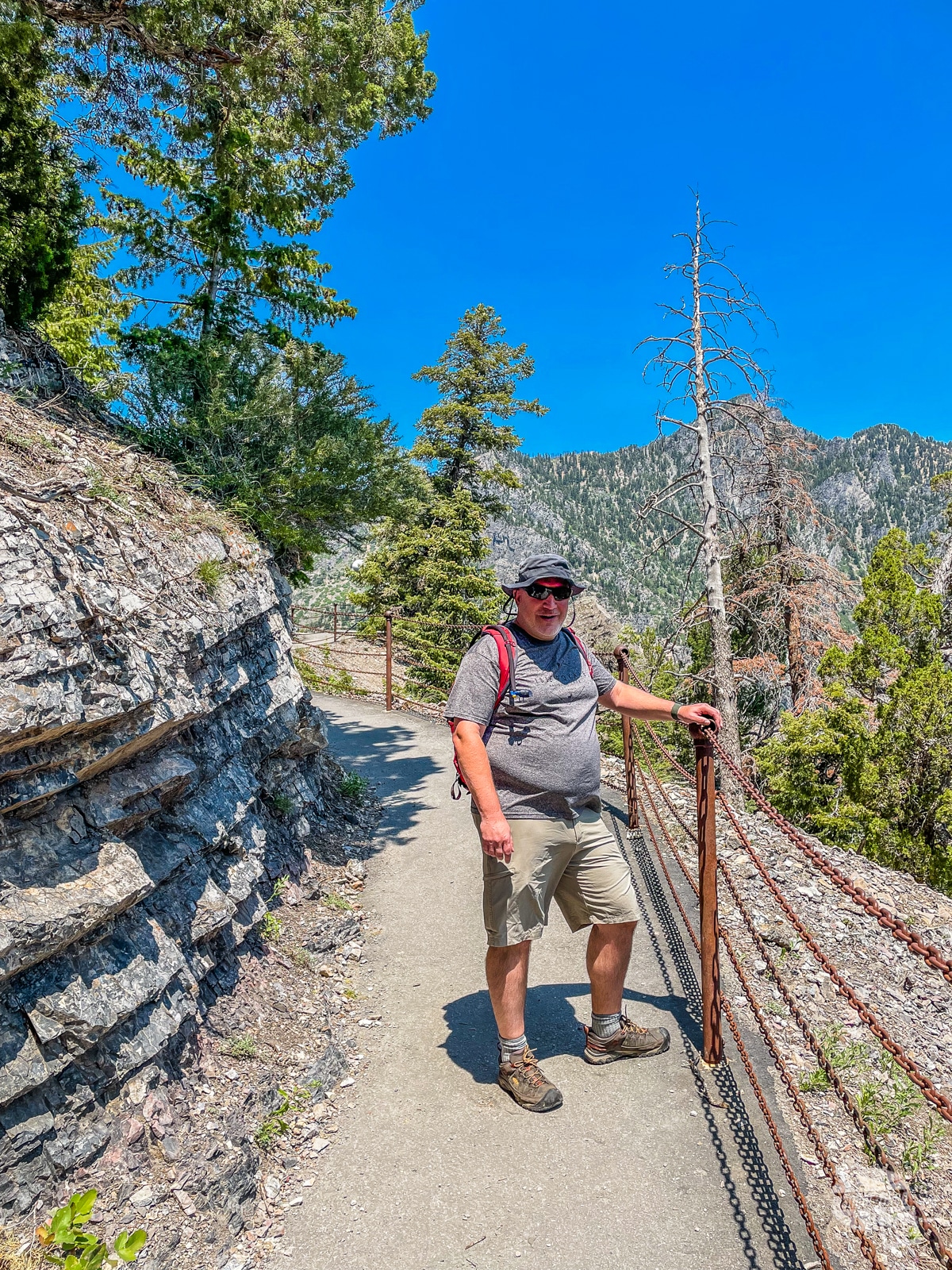
Tip #3: Don’t Spread White-Nose Syndrome
White-nose Syndrome is a fungus found in caves that kills hibernating bats. The fungus infects the bats’ skin, disturbing their hibernation and causing starvation and dehydration. White-nose syndrome was discovered in New York in 2006 and has since spread to the West Coast.
The spores for this fungus are highly resilient and can survive for years even on washed clothing.
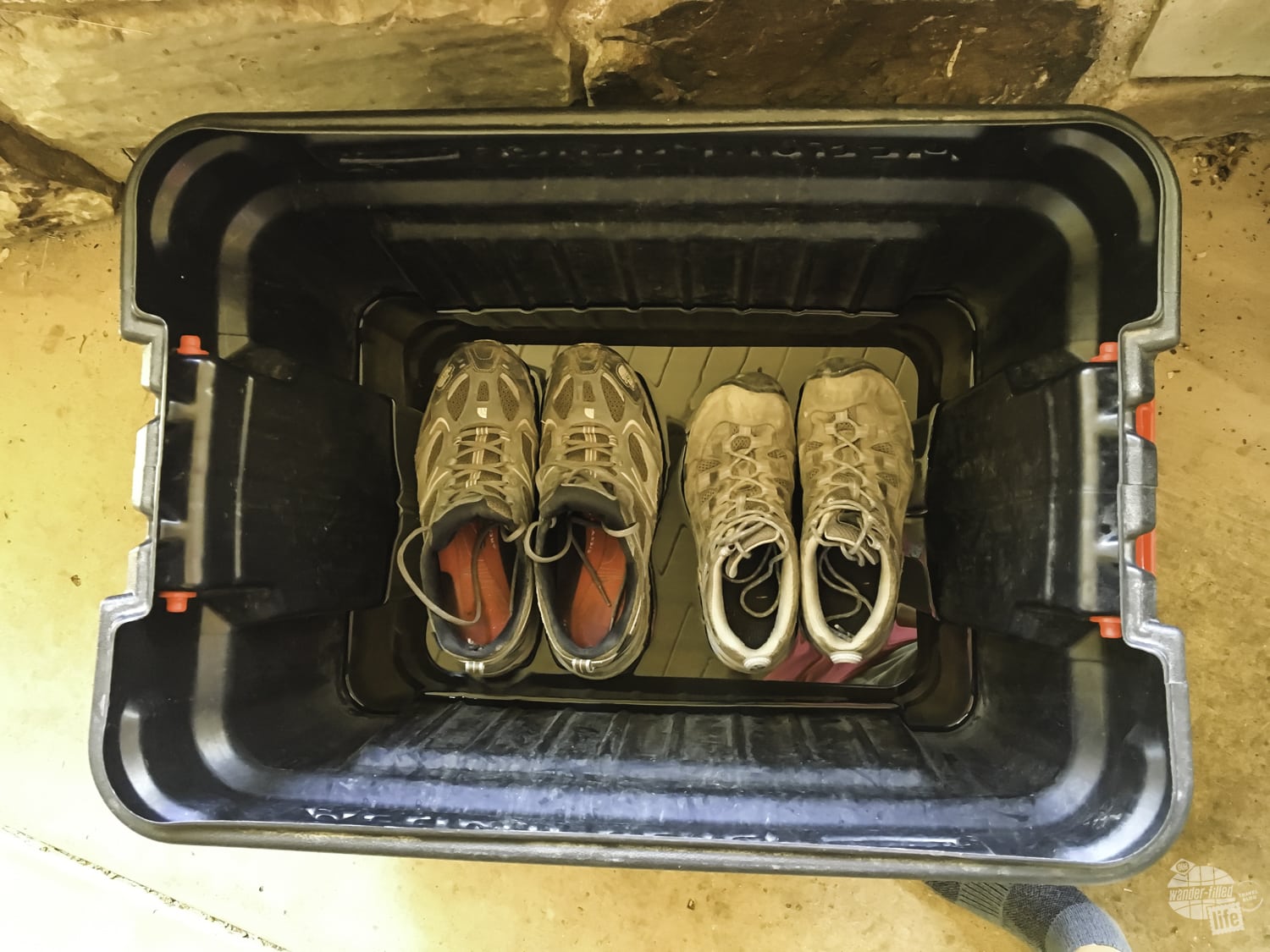
Every park handles White-nose syndrome differently. Some parks, like Oregon Caves National Monument, outright ban ANYTHING that has been in another cave or mine. Some, like Great Basin National Park, require footgear to be disinfected. Still others, like Mammoth Cave National Park, have disinfecting matting. When we visited Carlsbad Caverns National Park, we were surprised they were not as concerned about White-nose Syndrome because the bats that roost in the caverns do not hibernate there.
So, what should you do to avoid spreading this disease from cave to cave? Remember above when I told you to take a picture of everything you wear into a cave? That’s so you can double-check that everything you are planning on taking into the next cave has not been in a cave before.
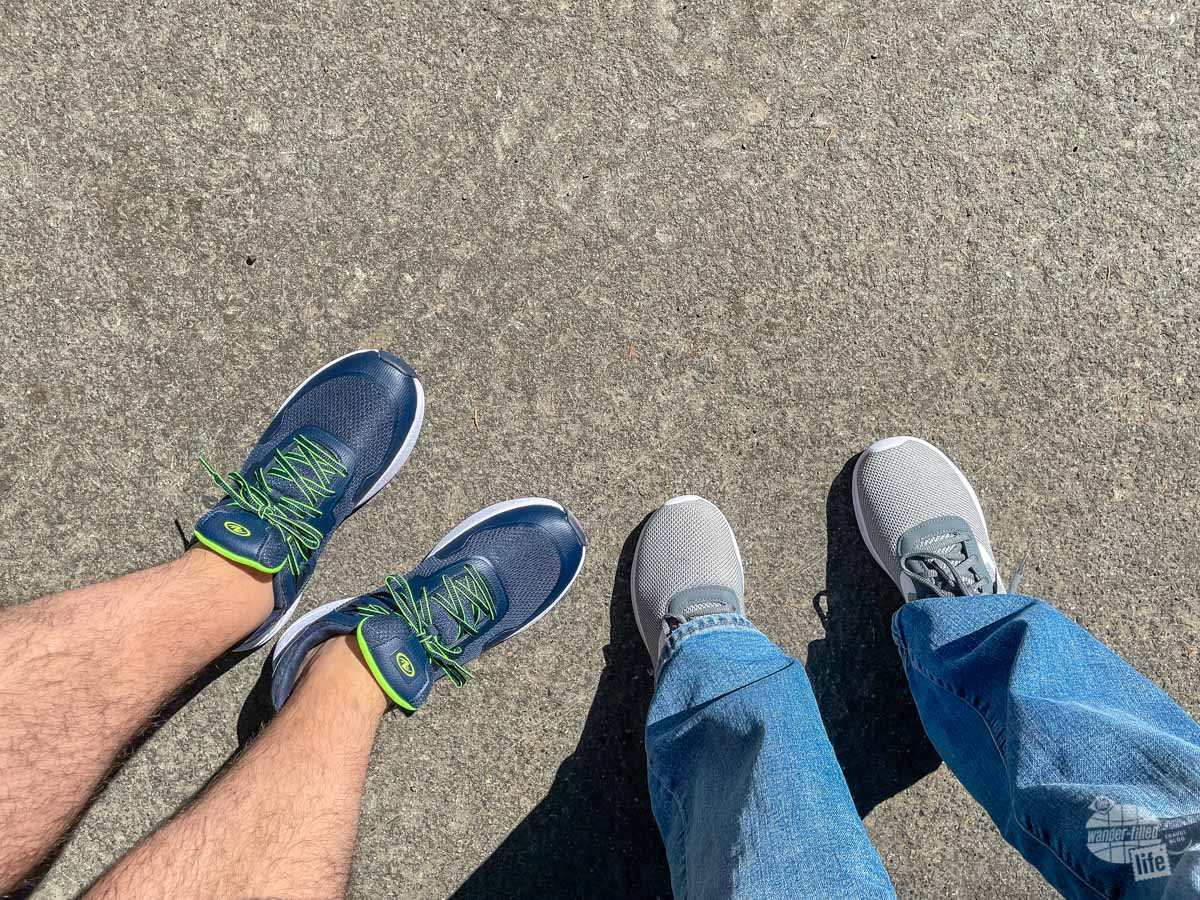
During 2021, we knew we would be visiting multiple caves in one summer. So, we made a point to make sure we had different outfits for each cave, including hats and accessories. We also made sure we had different shoes for each cave by going to Walmart to buy some cheap sneakers.
Tip #4: Don’t Be Afraid to Take a Different Tour or Explore on Your Own
There are certain tours at these National Park Service caves which are considered the “main tour” which everyone, it seems, takes when they visit. There is often a very good reason to take one of those tours as they are popular for a reason. Still, there are often opportunities to take more interesting tours, like candlelight or wild caving tours.
We took a candlelight tour in Wind Cave National Park and it was so very cool. We got to experience the cave like one of the early visitors. While the dim light did make it more difficult to see some of the formations, the experience itself was simply profound.
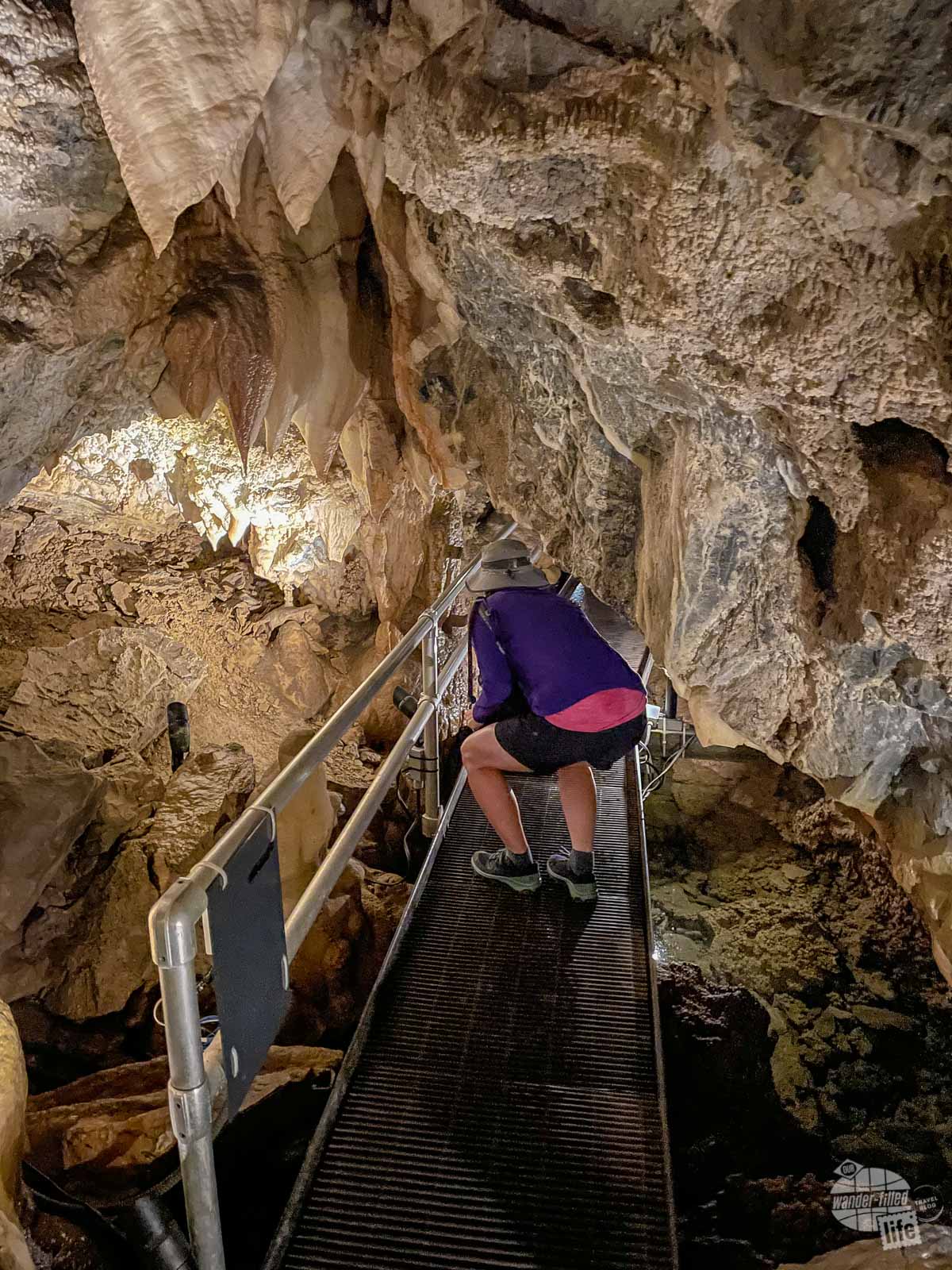
We also really enjoyed the moment when the ranger had us put all of the lights out. Sitting in the absolute darkness while our eyes vainly tried to adjust was both terrifying and exhilarating.
Some of the parks offer “wild” caving tours, which are more difficult and often require squeezing through tight spaces. Obviously, that is for someone who is in the right physical condition and has a hefty interest in a much more rugged experience. We have never taken one of those tours. While I love the idea of getting off the beaten path, I am a bit bigger and I don’t like the idea of being that cramped. I get a bit of claustrophobia when I am that compressed.
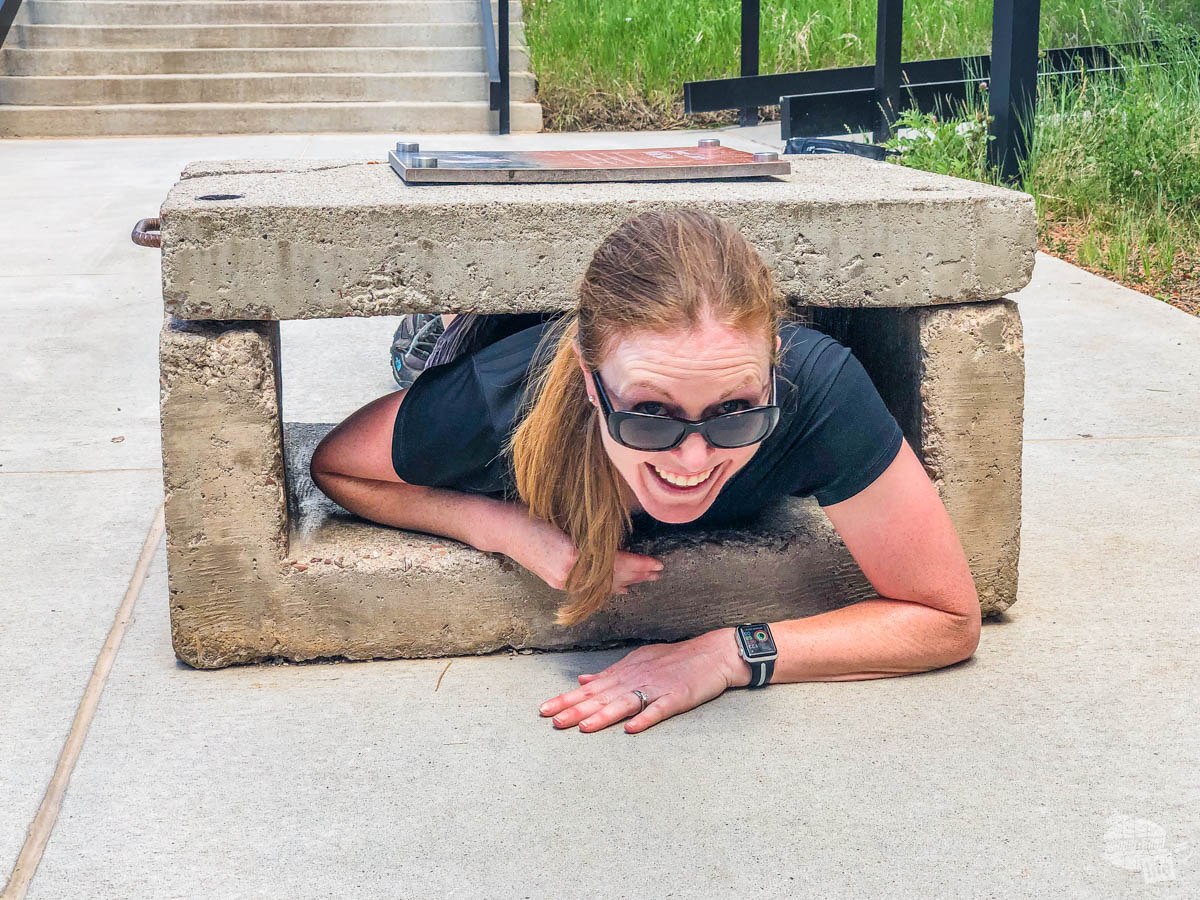
There are some places, like Lava Beds National Monument and Subway Cave near Lassen Volcanic National Park, where you can explore a cave on your own. When available, you absolutely should do this! While it can be a little intimidating to hike into a cave on your own, especially if you have no idea where it goes, etc., we have truly enjoyed the caves we have explored on our own. And, these caves are typically small with limited passages.
Just make sure you take more than one good light source with you! And, again, the flashlight on your phone doesn’t count!
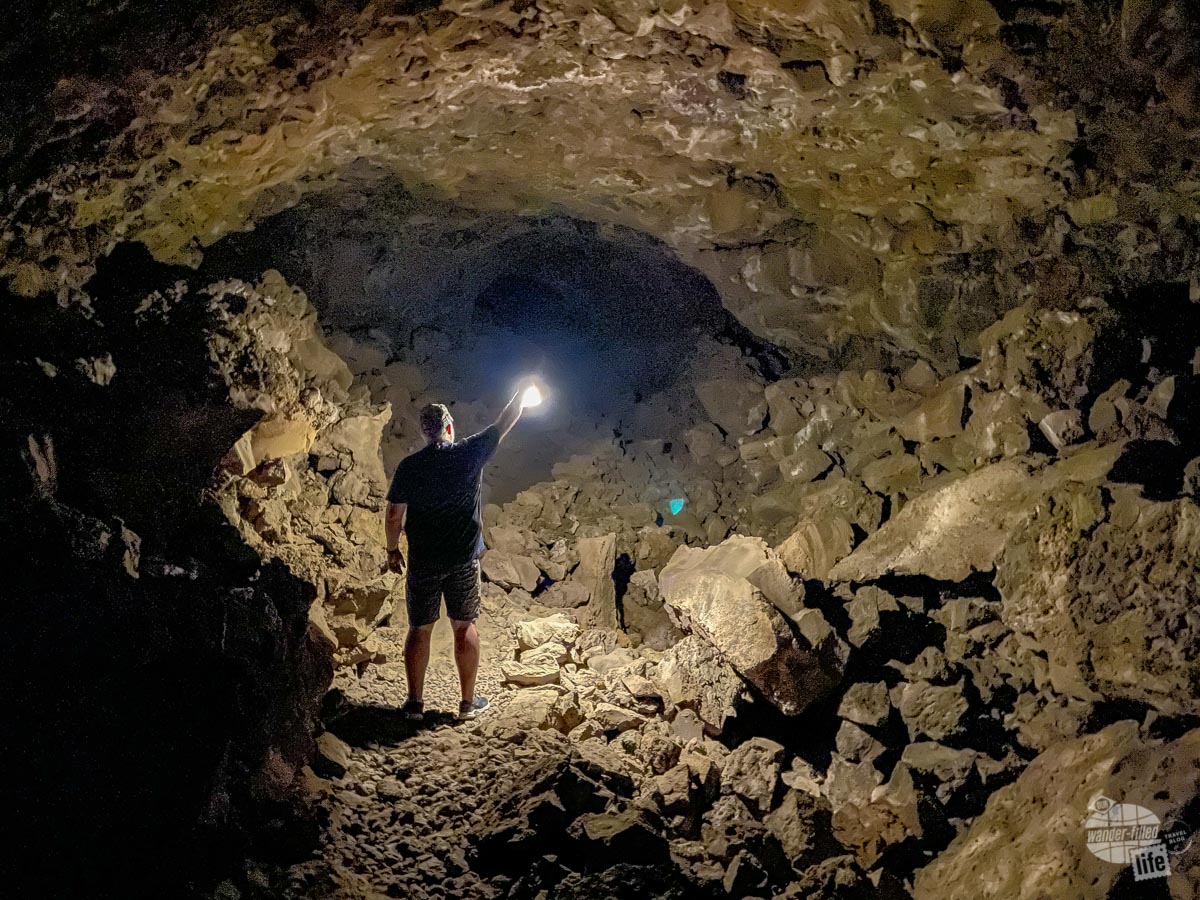
Tip #5: Don’t Ignore the Park Above Ground
While a good number of National Park Service cave sites have a small above-ground footprint, there are quite a few that have excellent above-ground facilities and plenty to keep you busy while you wait for your cave tour.
Even the most famous of the parks dedicated to caves, Mammoth Cave and Carlsbad Caverns national parks, have plenty to see and enjoy above the ground. Even Timpanogos Cave and Jewel Cave national monuments, despite their small footprint, have really cool above-ground areas. Indeed, Timpanogos Cave requires you to hike up to the cave entrance up a steep hill with excellent views of the canyon below.
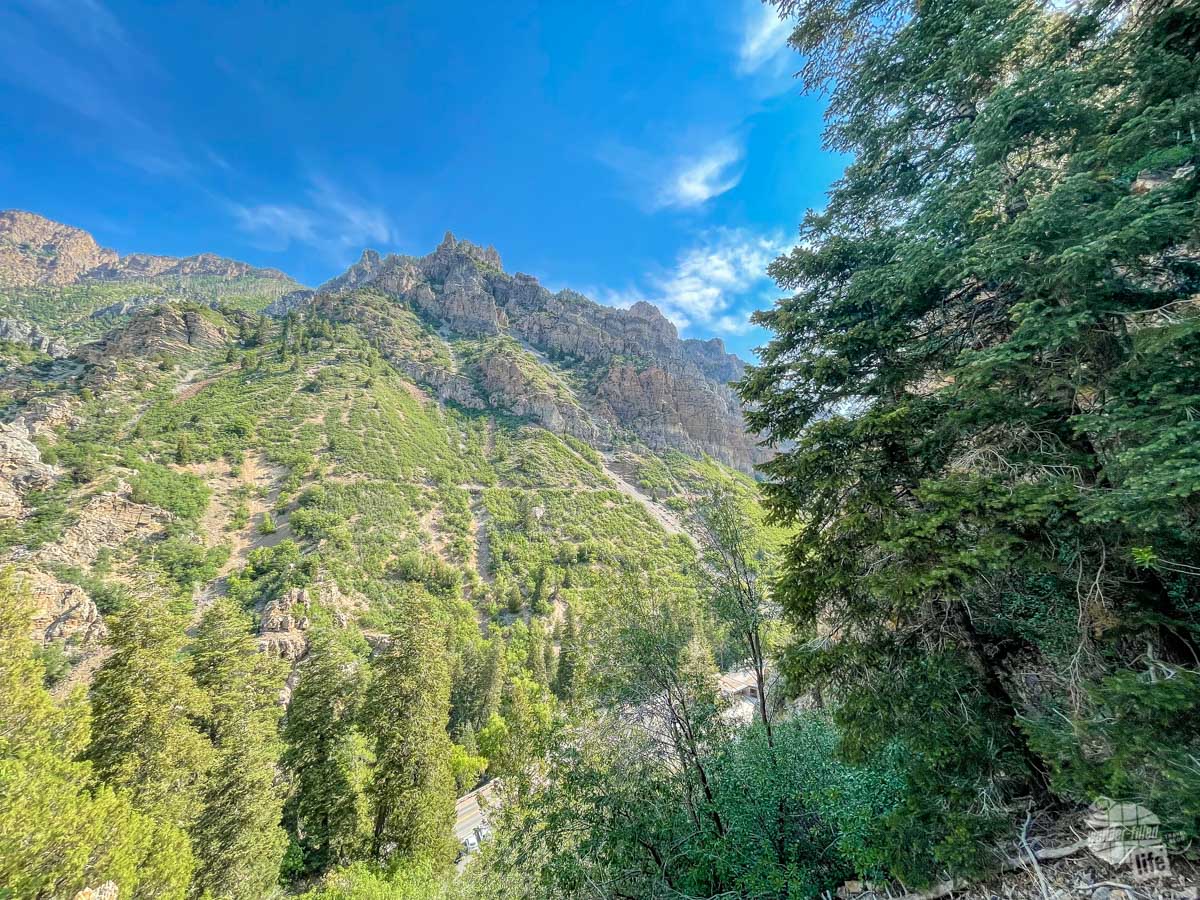
One of our favorite parks, Wind Cave National Park, is truly amazing above ground. It straddles the area where the Black Hills meets the prairie. We have hiked there and driven through the park several times and enjoyed it every time.
Aside from the epic scenery, there’s also a herd of bison and a herd of elk, among the other animals of the Plains, which have made this park home. Honestly, I probably enjoy spending time above ground more than touring the cave at Wind Cave NP.
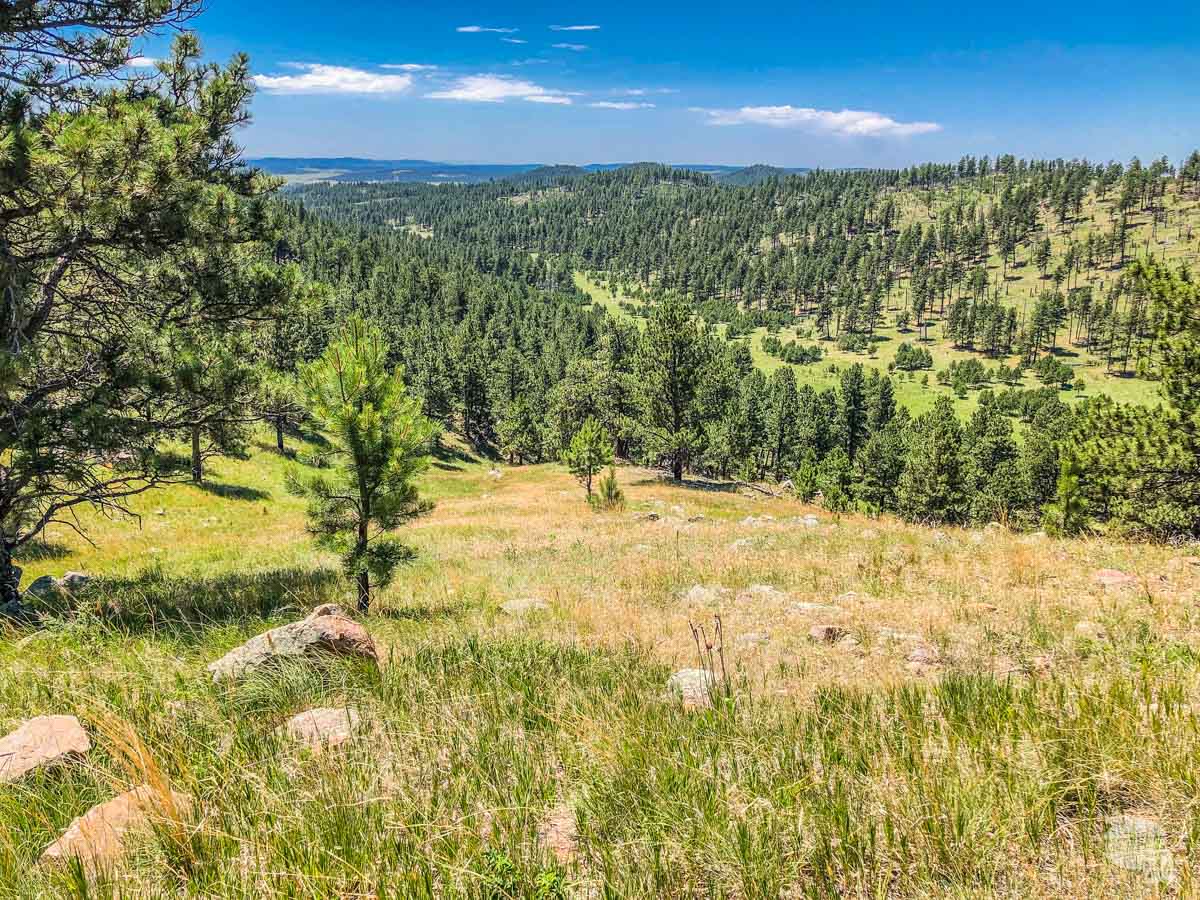
Final Thoughts on Visiting a National Park Service Cave
While planning a visit to a National Park Service cave can be a bit frustrating, especially when it comes to seasons of busy visitation, the experience of exploring these underground landscapes is every bit as spectacular as experiencing the majesty of the Rockies or the splendor of Old Faithful.
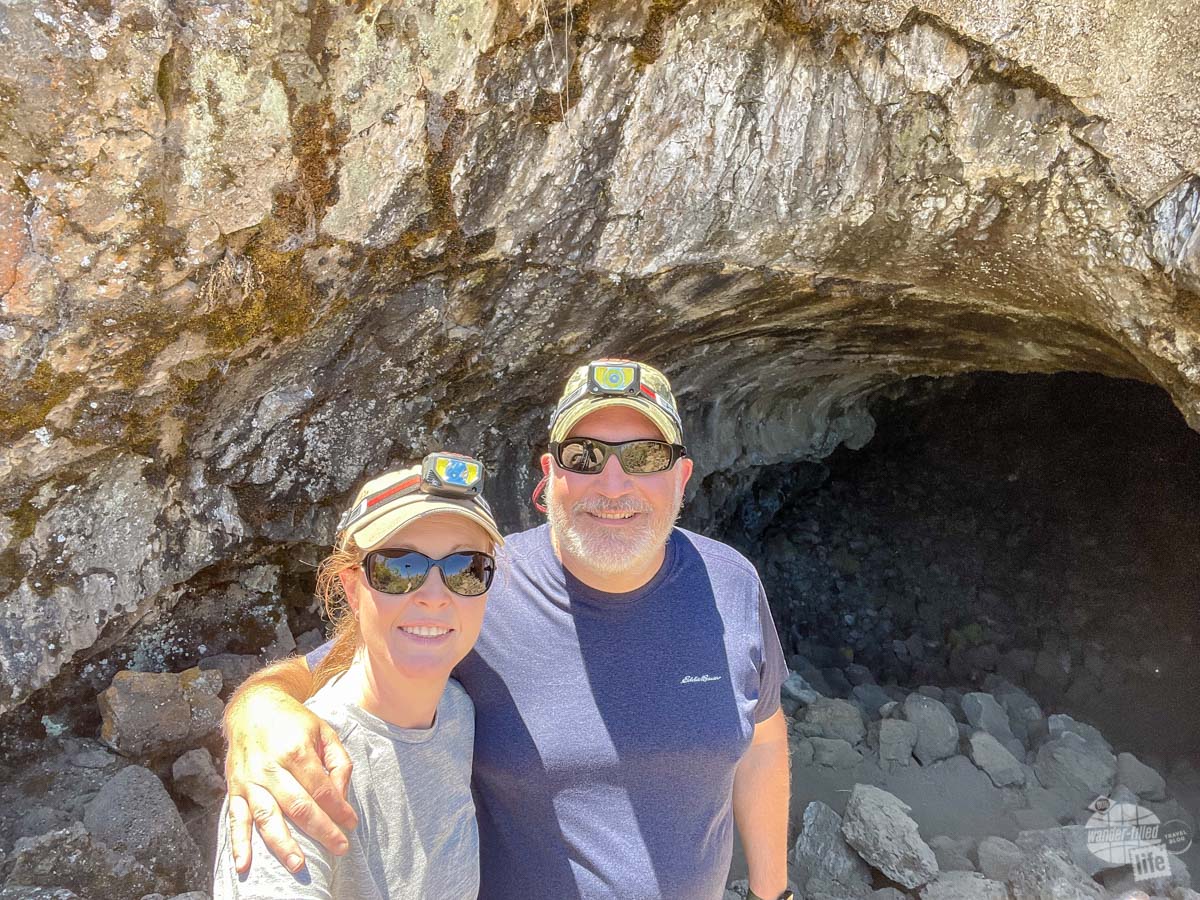
So, get out there and explore all of the underground places this country has to offer! Just be sure to pay attention to the details and do your best to prevent the spread of White-nose Syndrome.
Travel Resources
What do you use to find a flight?
We use Skyscanner to find deals on flights. Skyscanner has a great interface and compares tons of airlines for the best pricing and routing. That said, it does not always have every airline and some airlines will have better deals on their website. Still, Skyscanner is a great place to start.
Click here to search for a flight.
What do you use to find a hotel?
We typically stay at Hilton properties, so we use the Hilton website. You can find good Hilton Honors discounts or AAA discounts for a hotel there. We make great use of our free night certificates from our Hilton Honors American Express.
Click here to book a Hilton property.
If there are no Hilton properties available, we use TripAdvisor to read reviews and book the hotel. We find we can get the best price that way.
Click here to search for a hotel.
We recently partnered with Stay22 to add interactive maps to each of our destination posts. This will allow you to see a plethora of hotels and vacation rentals all in one responsive map of the area.
What if I need more space than I can get at a hotel?
We use Vrbo for the times when we have rented a cabin for a weekend getaway, like this cabin in Townsend, TN, or needed to rent a house for a large family vacation. We had a great experience with them in terms of refunding deposits when COVID hit and will continue to use them.
Click here to search for a vacation rental.
Who do you use for rental cars?
As a general rule, we book with Hertz for rental cars. We have had nothing but good experiences with them. Plus, we really like unlimited mileage and not worrying about crossing state lines. We have even rented from Hertz overseas in both Slovenia and Croatia.
Click here to book a rental car.
How about booking a cruise?
We have found some amazing prices for booking a cruise through Cruise Direct. We have saved a lot of money on our cruises compared to what we found elsewhere, making a last-minute Bahamas cruise even cheaper.
Click here to book a cruise.
What if I want to rent an RV?
We highly recommend Outdoorsy for RV rentals. We rented a camper van for a week to visit Rocky Mountain National Park for the elk rut and Custer State Park for the Buffalo Round-Up and had a blast. The program was easy to use and we really enjoyed the freedom of having a camper van for that trip.
Click here to rent an RV.
What do you use for booking tours?
We don’t often book tours. Typically, we like to do stuff on our own. That said, there are some experiences you can’t have any other way. So, when we do want to book a tour, we always check Viator first.
Click here to book a tour.
Do you use anything to get discounts on the road?
We make extensive use of both Good Sam and AAA on the road. Good Sam is normally regarded as a discount card for RVers at campgrounds and Camping World but anyone can use the 5 cents off a gallon at the pump at both Pilot and Flying J.
Click here to get a Good Sam membership.
We have had AAA as long as we have been married and it has more than paid for itself in discounts at hotels, aside from the peace of mind of having roadside assistance. Add in paper maps and the ability to get an international driver’s license and it is more than worth it for any traveler out there.
Click here to get a AAA membership.
